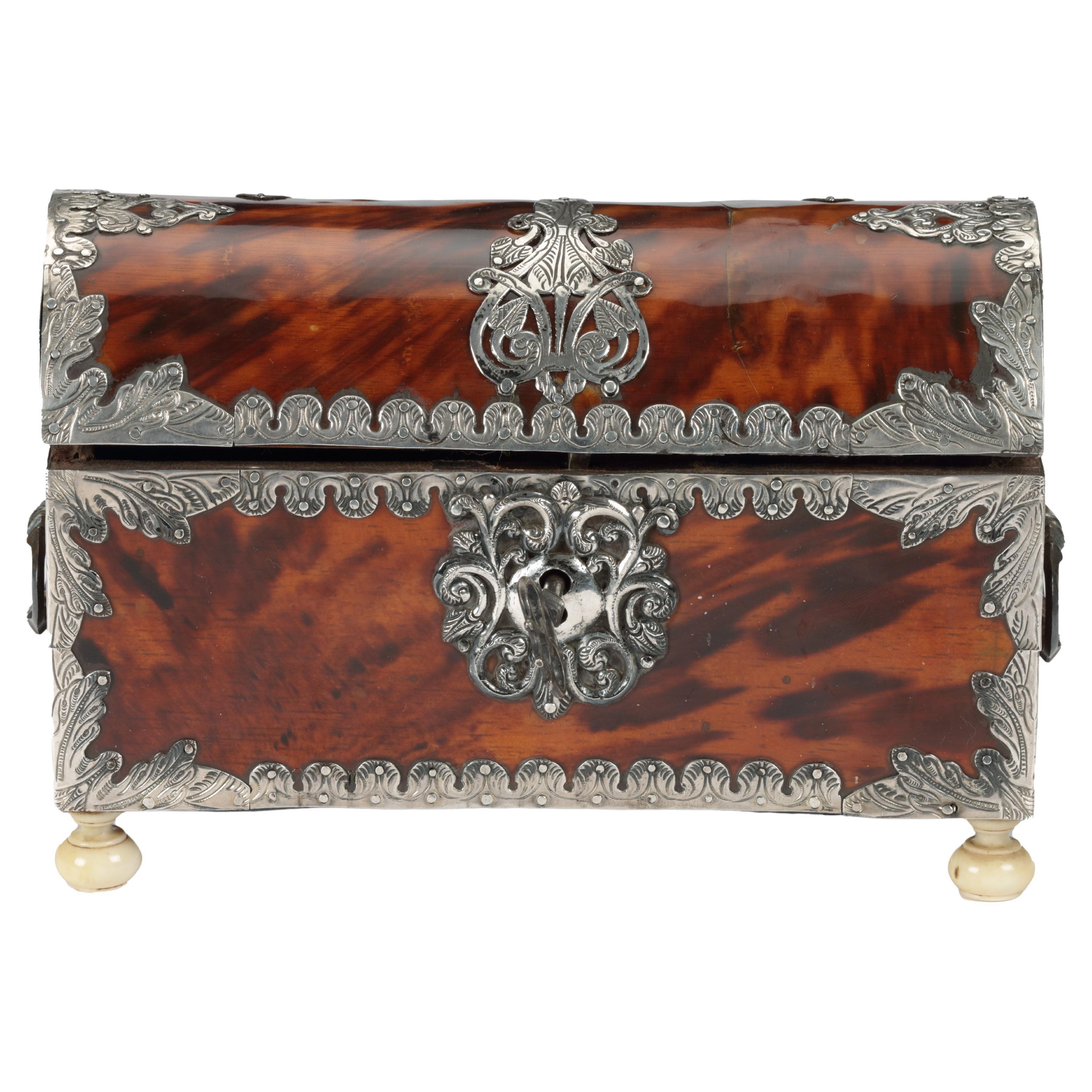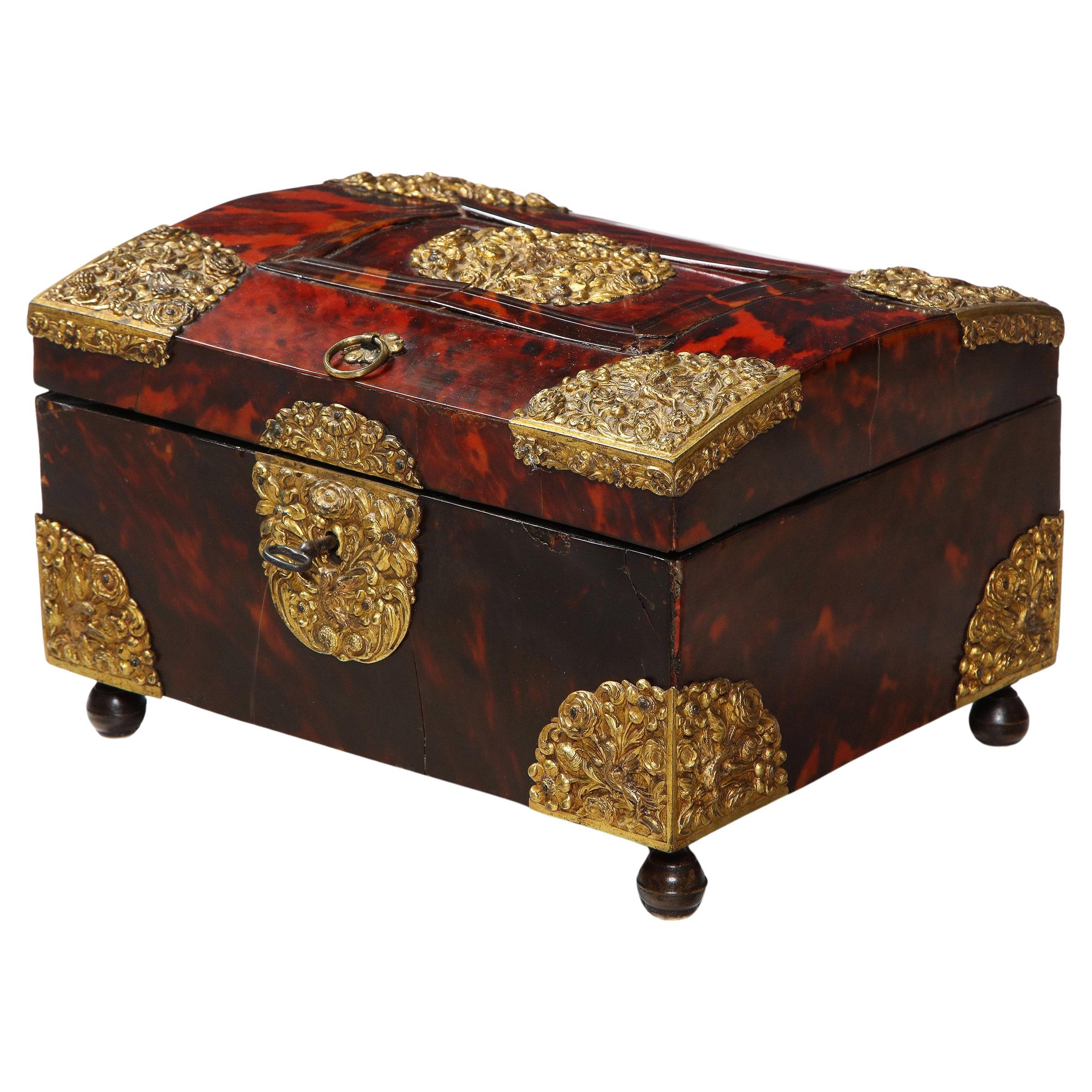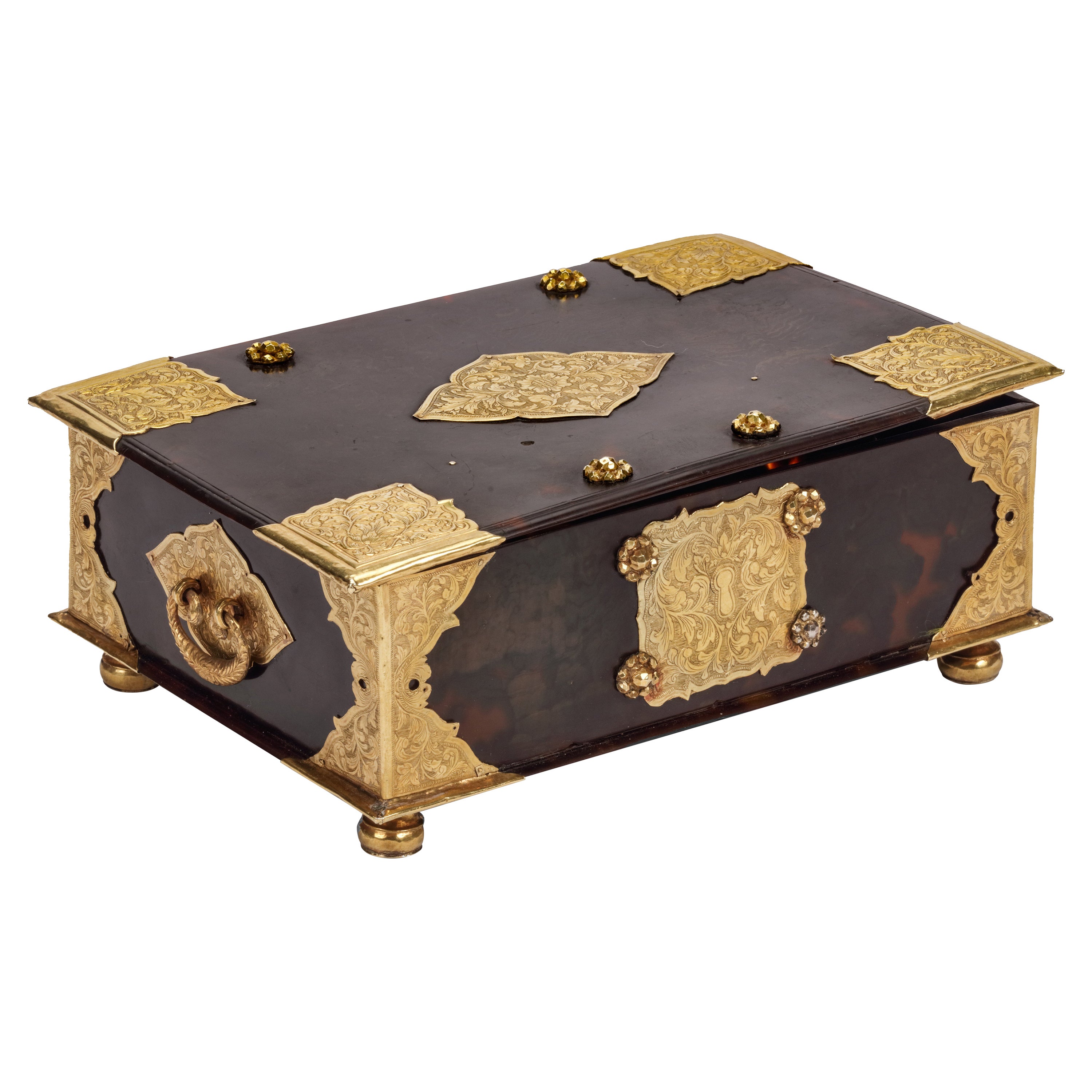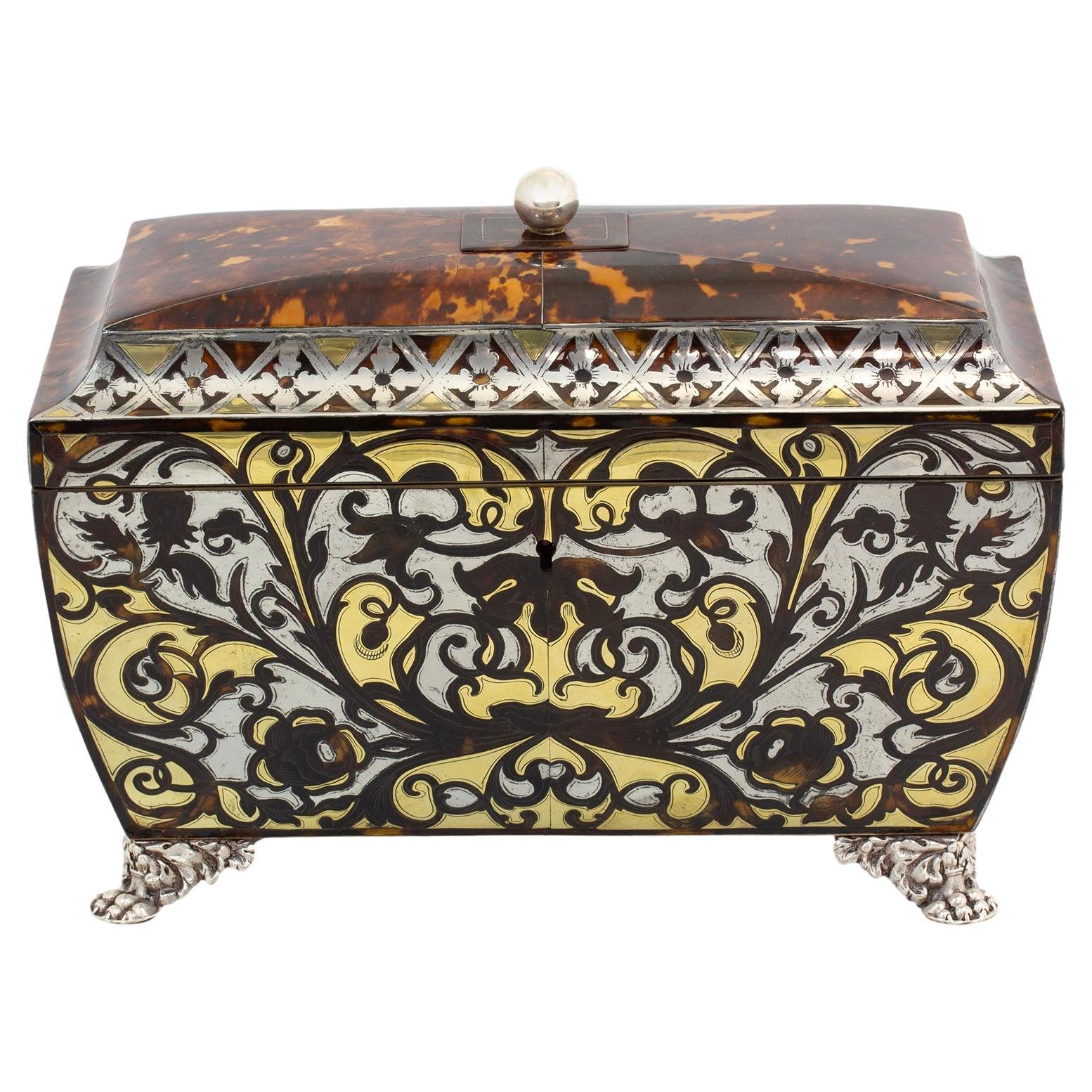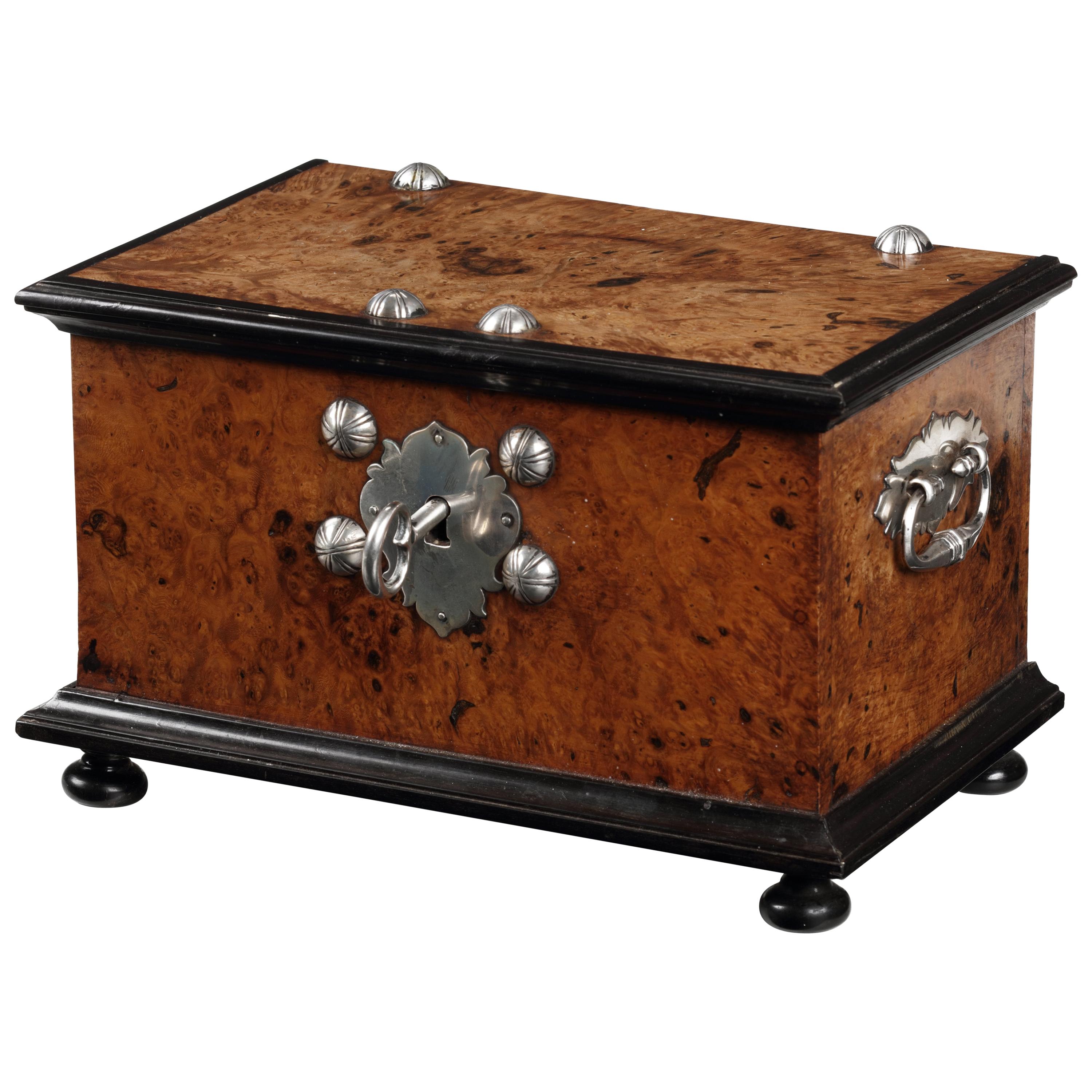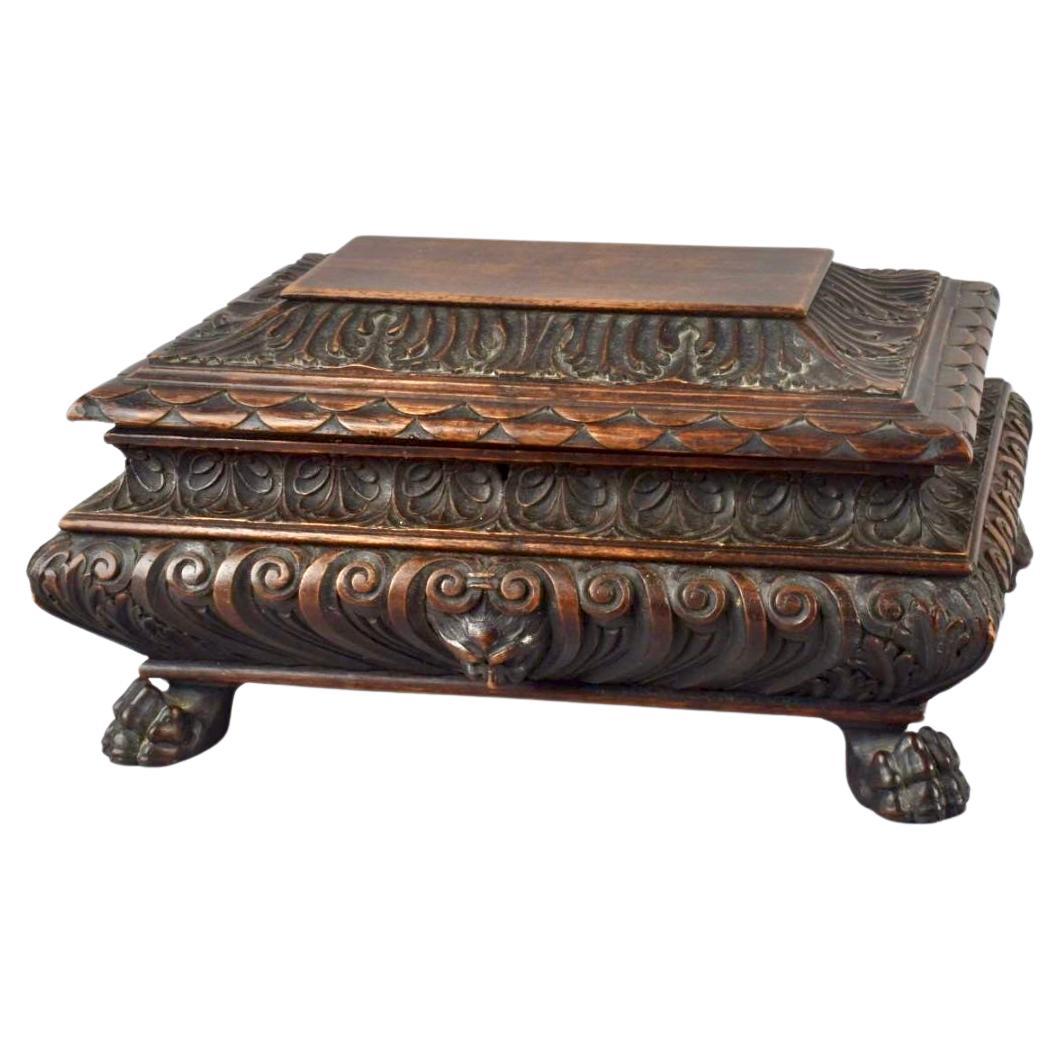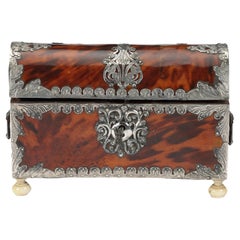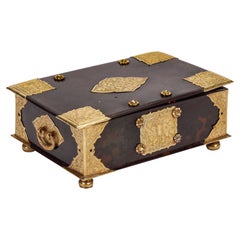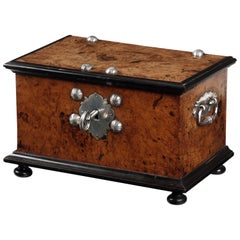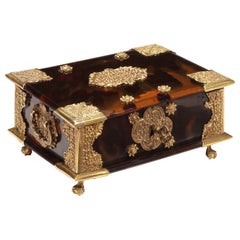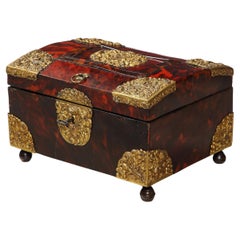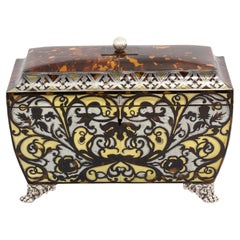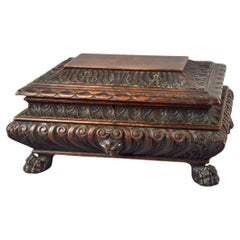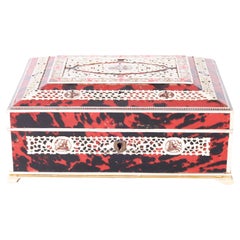Items Similar to An Indo-Portuguese colonial tortoiseshell veneered wooden casket
Want more images or videos?
Request additional images or videos from the seller
1 of 4
An Indo-Portuguese colonial tortoiseshell veneered wooden casket
$16,719.47
£12,363.53
€14,000
CA$22,965.82
A$25,536.67
CHF 13,368.91
MX$311,935.17
NOK 167,993.48
SEK 158,031.54
DKK 106,599.22
About the Item
India, probably made in Gujarat for Portuguese Goa, late 17th/early 18th century
The tortoiseshell laid over gold foil, and the interior with red lacquer and possibly later added red fabric.
H. 14 x W. 19.6 x D. 10.5 cm
Often, caskets like the one present are attributed to Goa in India, the most important Portuguese trade post in Asia. However, no sources are known that speak of any artisans or the production of luxury goods on a large scale in the city. This means that it is more likely that Portuguese merchants would travel to places like Gujarat to place orders or that Indian merchants would visit Goa.
- Dimensions:Height: 5.52 in (14 cm)Width: 7.72 in (19.6 cm)Depth: 4.14 in (10.5 cm)
- Materials and Techniques:
- Place of Origin:
- Period:Late 17th Century
- Date of Manufacture:Late 17th/ early 18th-century
- Condition:Wear consistent with age and use.
- Seller Location:Amsterdam, NL
- Reference Number:1stDibs: LU5458237781792
About the Seller
5.0
Recognized Seller
These prestigious sellers are industry leaders and represent the highest echelon for item quality and design.
Established in 1985
1stDibs seller since 2020
23 sales on 1stDibs
Typical response time: 5 hours
- ShippingRetrieving quote...Shipping from: Amsterdam, Netherlands
- Return Policy
Authenticity Guarantee
In the unlikely event there’s an issue with an item’s authenticity, contact us within 1 year for a full refund. DetailsMoney-Back Guarantee
If your item is not as described, is damaged in transit, or does not arrive, contact us within 7 days for a full refund. Details24-Hour Cancellation
You have a 24-hour grace period in which to reconsider your purchase, with no questions asked.Vetted Professional Sellers
Our world-class sellers must adhere to strict standards for service and quality, maintaining the integrity of our listings.Price-Match Guarantee
If you find that a seller listed the same item for a lower price elsewhere, we’ll match it.Trusted Global Delivery
Our best-in-class carrier network provides specialized shipping options worldwide, including custom delivery.More From This Seller
View AllA colonial tortoiseshell veneered casket with silver mounts
Located in Amsterdam, NL
Possibly Spanish colonial, 17th century
H. 15.2 x W. 25.1 x D. 12 cm
Included is a hand-written letter, reading:
Ik Ondergetekenden verklare bij dezen, dat mijn Wel en Begeerte is...
Category
Antique 17th Century Mexican Antiquities
Materials
Silver
A rare Indonesian tortoiseshell sirih casket with gold mounts
Located in Amsterdam, NL
Batavia (Jakarta), 19th century, apparently unmarked
H. 5 x W. 18 x D. 13 cm
Before settling down to business in the former Dutch East Indies, sirih had to be offered in the most e...
Category
Antique 19th Century Indonesian Jewelry Boxes
Materials
Gold
Fine Dutch Colonial Indonesian Casket with Silver Mounts, circa 1706
Located in Amsterdam, NL
A fine Indonesian Ambonya burl, ebony and teak casket with silver mounts
Jakarta (Batavia), circa 1706 (year letter W (1705-1710), marked DV, probably Dirck Vooght
The outer ri...
Category
Antique Early 18th Century Indonesian Dutch Colonial Decorative Boxes
Materials
Sterling Silver
A small Dutch colonial Indonesian tortoiseshell betel box with gold mounts
Located in Amsterdam, NL
Jakarta (Batavia), 18th century, apparently unmarked
L. 14 x W. 9.5 x H. 4.7 cm
Before settling down to business in the former Dutch East Indies, sirih had to be offered in the mos...
Category
Antique Late 18th Century Indonesian Dutch Colonial Antiquities
Materials
Gold
An Indo-Portuguese bone-inlaid ebony and teak writing box with gilt-brass mounts
Located in Amsterdam, NL
India, Goa, 17th century
The box, overall inlaid with a delicate pattern in ebony and bone in teak reserves bordered by brass-studded ebony, is of oblong shape. The corners, lock-pl...
Category
Antique 17th Century Indian Cabinets
Materials
Bone, Ebony, Teak
An Indian colonial tortoiseshell veneered teak portable two-door cabinet
Located in Amsterdam, NL
Mughal India, Gujarat, 2nd half 17th century
H. 22.4 x W. 30.3 x D. 26.8 cm
This small cabinet has six drawers behind two doors. Originally ordered by the Portuguese, and made afte...
Category
Antique 17th Century Indian Antiquities
Materials
Tortoise Shell, Teak
You May Also Like
Dutch Colonial Indonesian Tortoiseshell Box with Gilded Brass mounts
Located in Lyndhurst, NJ
Of superb quality, this red tortoise shell box with beautifully executed gilded brass mounts was most likely originally made to hold Tea of Sirih. It is in very fine antique conditio...
Category
Antique Late 18th Century Dutch Baroque Jewelry Boxes
Materials
Brass
Antique Regency Boulle Tortoiseshell Tea Chest
Located in Northampton, GB
Boulle Style Front
From our Tea Caddy collection, we are thrilled to offer this Regency Tortoiseshell Tea Chest. The Tea Chest of sarcophagus shape with a gently tapering body and a...
Category
Antique Early 19th Century English George IV Tea Caddies
Materials
Brass, Pewter
Italian Wood Carved Casket Box
Located in Bradenton, FL
19th century Italian wooden carved casket box in the baroque style. Features gothic faces and lions paw feet. Can be used as a jewelry or trinket box or ...
Category
Antique 19th Century Italian Baroque Decorative Boxes
Materials
Wood
Antique Anglo Indian Tortoise and Bone Box
Located in Palm Beach, FL
Standout exotic Anglo Indian lidded box handcrafted in mahogany and clad in tortoise shell with applied lacy bone designs inscribed and painted with flowers. The interior has a mirro...
Category
Early 20th Century Indian Anglo-Indian Decorative Boxes
Materials
Bone, Tortoise Shell, Mirror, Mahogany
19th Century English Tortoiseshell Tea Caddy
Located in Atlanta, GA
19th Century English Tortoiseshell Tea Caddy
Category
Antique 19th Century English Tea Caddies
Materials
Tortoise Shell
Large 19th Century Tortoiseshell Sewing Box
Located in Atlanta, GA
Large 19th Century Tortoiseshell Sewing Box
Category
Antique 19th Century Decorative Boxes
Materials
Tortoise Shell
More Ways To Browse
Used Luxury Goods
Portuguese Jewellery
Silver Box India
Portuguese Gold Jewellery
Colonial India
Jewelry Travel Box
Antique Wooden Scale
17th Century Jewellery
17th Century Portuguese
17th Century Portuguese Furniture
Gold Casket
17th Century Wood Box
18th Century Wooden Boxes
Indo Made
Silver Casket
Tortoise Boxes
Tortoiseshell Gold
Wood Casket
